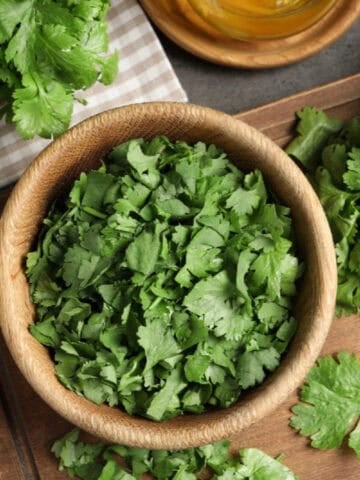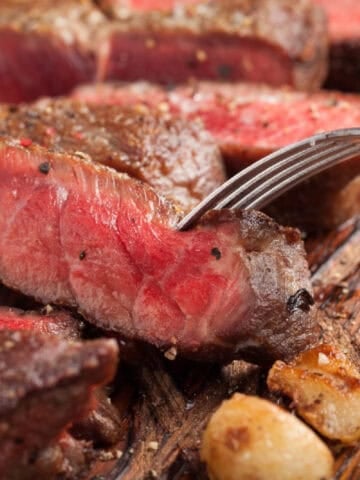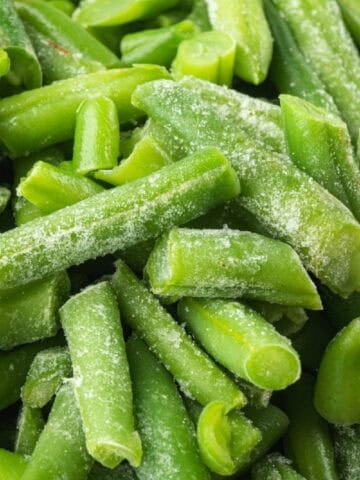Whether you’re a seasoned pro or just starting your baking journey, there’s a good chance you’ll eventually find yourself without baking soda—or realize that the box in your pantry has expired. In these moments, knowing what alternatives you can turn to is helpful.

Jump To
Thankfully, several easy-to-find ingredients can step in when baking soda is missing. From baking powder to club soda, this article will walk you through the best baking soda substitutes so you can get back to baking quickly.
Why Baking Soda and Its Substitutes Are Essential
Here are a few reasons why you need it:
- It is a leavening agent — it helps baked goods rise.
- Baking soda also helps give baked goods their fluffy texture.
- It helps with browning and caramelization as well.
Without it, many recipes wouldn’t achieve the proper texture, height, or golden color we expect in baked treats.
Common baking soda substitutes
When using baking soda substitutes, keep in mind that it may change the texture or rise of the baked good. Although not a perfect match, these ingredients can often do the trick in a pinch.
Baking powder
Baking powder works best in recipes that only call for baking soda. Too much baking powder can leave a recipe tasting salty, so leave out any additional salt the recipe calls for. Baking powder is a leavening agent like baking soda, but it also makes baked goods fluffier, so cookies might turn out cakier.
To substitute baking powder for baking soda, use three times as much baking powder as you would baking soda. For example, if the recipe calls for 1 teaspoon of baking soda, use 3 teaspoons of baking powder. If your recipe uses both baking soda and baking powder, adjust accordingly by keeping the original amount of baking powder and adding more to compensate for the missing baking soda.
“As much as I think I plan ahead, sometimes I find myself without baking soda, so I add 3 teaspoons of baking powder for every teaspoon of baking soda that my recipe calls for. It's never let me down yet.”
— Mandy Applegate, Splash of Taste
Self-rising flour
Self-rising flour only works as a substitute for baking soda in recipes that already call for flour. Adding flour to a recipe that does not call for flour will ruin the consistency of the batter. It is an excellent option for cookies, cakes, and quick bread.
Self-rising flour is different from all-purpose flour because it has 1 ½ teaspoons of baking powder and ¼ teaspoon of salt mixed into every cup of flour, so it already has a leavening agent. You will have to do some math for this substitute.
First, swap the all-purpose flour in your recipe with an equal amount of self-rising flour. Then, calculate the built-in baking powder in the self-rising flour — 1 ½ teaspoons per cup. Finally, confirm that this amount is at least three times the baking soda the recipe originally required.
For instance, if your recipe calls for 2 cups of flour and 1 teaspoon of baking soda, using 2 cups of self-rising flour gives you 3 teaspoons of baking powder — a proper substitute.

Whipped egg whites
Whipped egg whites work best in simple cakes, cookies, and muffins. They work as a leavening agent, just like baking soda.
Two whipped egg whites replace one teaspoon of baking soda. However, you don’t want to add extra liquid to a recipe, so you must measure the egg whites. For example, if you add 2 tablespoons of egg whites, remove 2 tablespoons of milk or water from your recipe. Once measured, whip the egg whites into stiff peaks and fold them into the batter at the end of the mixing steps so they are less likely to deflate.
If your recipe includes eggs but not extra liquid, simply separate the eggs. Beat the yolks in as directed, then whip the egg whites until stiff and gently fold them in last to help the batter rise.
Club soda
Club soda works as a baking soda substitute when your recipe calls for at least ½ cup of liquid. The carbon dioxide in club soda will give baked goods a lift and help them expand, just like baking soda.
To use club soda as a substitute for baking soda, replace ¼ cup of the liquid called for in the recipe with ¼ cup of club soda. When using this method, it is best to add the club soda as the last ingredient. The bubbles will start popping immediately, so the faster you get your baked goods in the oven, the better. More bubbles mean more lift.
Club soda is especially useful in light cakes, pancakes, or muffins where a bit of extra moisture and lift won’t affect the consistency.
Potassium bicarbonate and salt
Potassium bicarbonate works in any recipe that calls for baking soda, such as cakes, cookies, and muffins. It has the same leavening properties as baking soda, except it doesn’t contain salt. Potassium bicarbonate works as a one-to-one substitution, but you will have to add salt. Add ⅓ of a teaspoon of salt for every teaspoon of potassium bicarbonate.
It’s commonly sold as a low-sodium substitute for baking soda and is ideal for those monitoring their sodium intake — just be sure to reintroduce a small amount of salt to maintain flavor balance.
Baker’s ammonia
Baker’s ammonia, also known as ammonium carbonate, works best in thin and crispy baked goods like thin, crispy cookies, crackers, and biscotti. It has a strong ammonia smell, but the smell bakes off in low-moisture recipes. In recipes with higher moisture content, like cakes and muffins, the smell does not bake off and may be too strong.
Baker’s ammonia helps baked goods rise and expand when combined with heat and acid to produce carbon dioxide. It works as a one-to-one substitution for baking soda.
Though it's uncommon in most home kitchens, baker’s ammonia has been used for centuries and still has a place in certain traditional cookie recipes.
Final thoughts
While having all the ingredients you need is ideal, baking powder substitutes can work well too. Whether you're mid-recipe or just starting out, these baking soda alternatives can help save the day. Be sure to follow all of the directions carefully when using the substitutions above, and remember that the texture or the rise may be slightly different than when using baking soda.
With the right knowledge and adjustments, your baked goods can still turn out beautifully, even without that trusty box of baking soda.






Leave a Reply